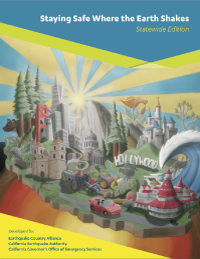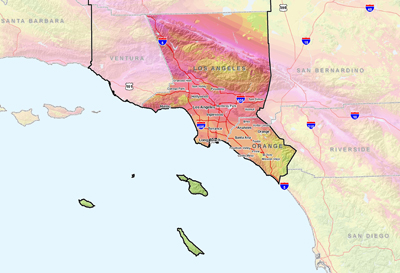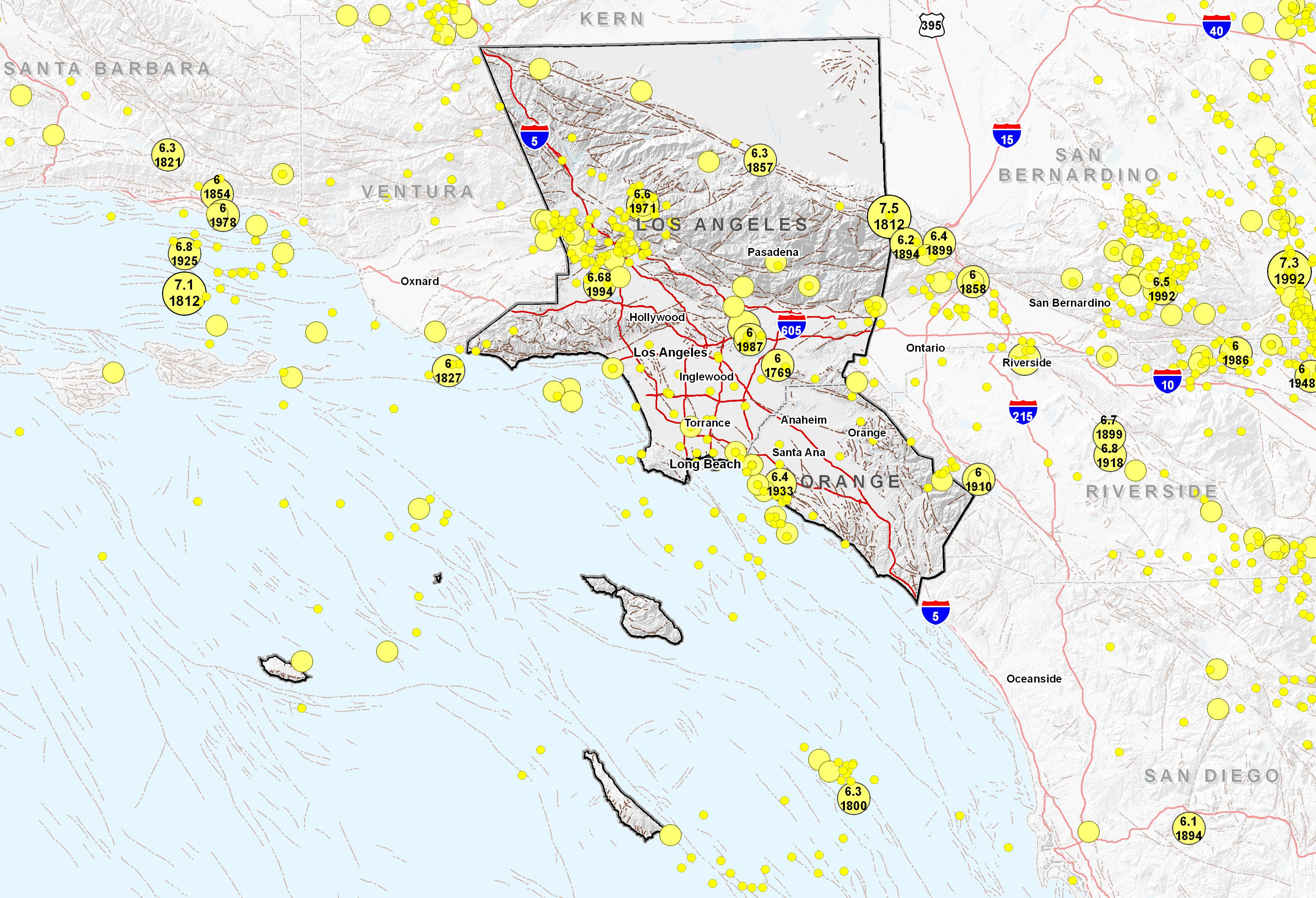Over 360,000 people are currently registered to participate in this year's Great California ShakeOut.
118,385 are from
the Southern California Coast area.
Number of Southern California Coast participants in each category
View names of participants:
Counties: Los Angeles, Ventura, Orange
Southern California is a diverse and exciting place to live for millions of people. All Californians know that we live in earthquake country, but many of us have not experienced a damaging earthquake (such as young people or those that have moved to the region in recent years). Understanding the risks and preparing to survive and recover can help keep your family safe.
Those living in southern California love our mountains, but how many know the mountains are there because of the San Andreas fault? This fault slices through Los Angeles County along the north side of the San Gabriel mountains and will create the biggest earthquakes – as big as magnitude 8. That earthquake will disrupt the whole region but is not our only problem. There are over a hundred other active faults in the region that can produce smaller earthquakes like the 1994 Northridge earthquake. If you live in southern California, one or more of these faults is probably near you.
Life After a Big Quake
These earthquakes will disrupt services like electricity, water and sewer, and may limit access in and out of the region. Fire and police departments will be dealing with the most serious situations and may be unable to respond quickly to issues in your community. Government assistance may not be available or not enough to replace your damaged belongings or repair your home. Good news: Preparing now will give you confidence that you and your family will stay safe where the earth shakes.
The Southern California Coast area is highly susceptible to earthquakes and earthquake related effects. Numerous earthquake faults crisscross southern California and no one within the area resides more than 10 miles from an active fault. In addition to damage caused directly by ground shaking and related ground failure, other hazards such as fires can easily start during and shortly after an earthquake.
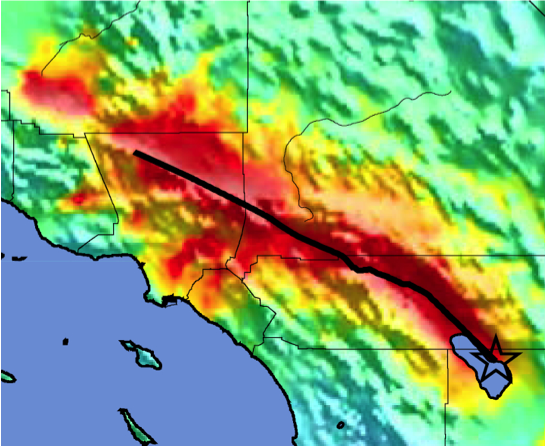
Designed for the original ShakeOut in 2008, the ShakeOut Scenario portrays a magnitude 7.8 earthquake along the southern San Andreas fault. Much more can still be learned in preparing for such a large earthquake! The Scenario is a product of the United States Geological Survey, Multi-Hazard Demonstration Project, led by Dr. Lucy Jones.
Fires may spread quickly in densely-built neighborhoods, enabling them to sustain for long periods, spread over large areas and, due to broken water pipes and the number of ignitions, simply overwhelm the abilities of firefighters to control them. On the other hand, earthquakes occurring during periods of heavy rain can produce destructive and life threatening slurry-like debris flows that originate on the steep slopes and gullies of the many rugged mountain areas and can flow into adjacent communities.
The driving force of earthquakes in California is movement along the San Andreas Fault and the many associated faults within the San Andreas Fault System that form the tectonic boundary between the Pacific and North American tectonic plates. Along this boundary, the Pacific Plate is moving slowly to the northwest relative to the North American Plate. The Pacific plate underlies most of the Pacific Ocean, as well as all California west of the San Andreas fault. When most people think of earthquakes in California, the San Andreas Fault is usually the first thing to pop in their minds, and while the San Andreas Fault is the longest fault in the state it is by no means the only one to be concerned with. Many other faults are found directly beneath our cities in some of the most densely populated areas.
Large earthquakes anywhere in the Southern California Coast area can affect you, even if the shaking is not strongly felt where you happen to be. Consider what might happen to the nation's economy if the harbors in Los Angeles and Long Beach were put out of commission, and the normal flow of goods were to be disrupted. What if a freeway overpass along your commute were to be heavily damaged or destroyed? How would you find drinking water if subsurface supply pipes are broken? We all must consider these and other plausible scenarios that can happen at any time and take measures that would minimize their impacts.
Because you live in the Southern California Coast area, it is likely that a damaging earthquake will occur and affect you during your lifetime. You decide your fate. You decide your future. The steps you take now can mean the difference between your success or failure after the next big quake. Start now!
Additional earthquake hazard information:
MyHazards
California Emergency Managment Agency
Use this website to discover the hazards that exist in your area and learn how to reduce YOUR risk!
Fault maps, historic earthquakes, how the ground is expected to shake, and much more
California Geological Survey (CGS)
Forecast of California Earthquakes
Southern California Earthquake Center, USGS, and CGS
Fault and earthquake maps, shaking hazard maps, liqufaction maps, and other information
United States Geological Survey, Northern California
Earthquake Shaking Potential Map of California (Dec. 2008)
California Geological Survey (CGS)
Earthquake and Tsunami Hazards and Mitigation Information
California Emergency Management Agency
Maps of recent earthquakes, ShakeMaps for larger earthquakes, email notification, and more
California Integrated Seismic Network
Question: Can I sign up to receive emergency information when a disaster is happening?
In Los Angeles County: Visit lacounty.gov to register for Alert LA County and Specific Needs Awareness Planning (SNAP) programs, and for important disaster preparedness information - Los Angeles County Emergency Survival Guide.
In Orange County: Visit AlertOC.com to register your alternate phones, text devices and e-mail addresses to receive important updates and instructions during a disaster.
In Ventura County: Register your alternate phones, text device and e-mail address on VCAlert for important disaster information. And, visit www.readyventuracounty.org.
For more information, visit the following:
espfocus.org
In Los Angeles County: lacoa.org
In Orange County: ReadyOC.org
In Ventura County: www.readyventuracounty.org
